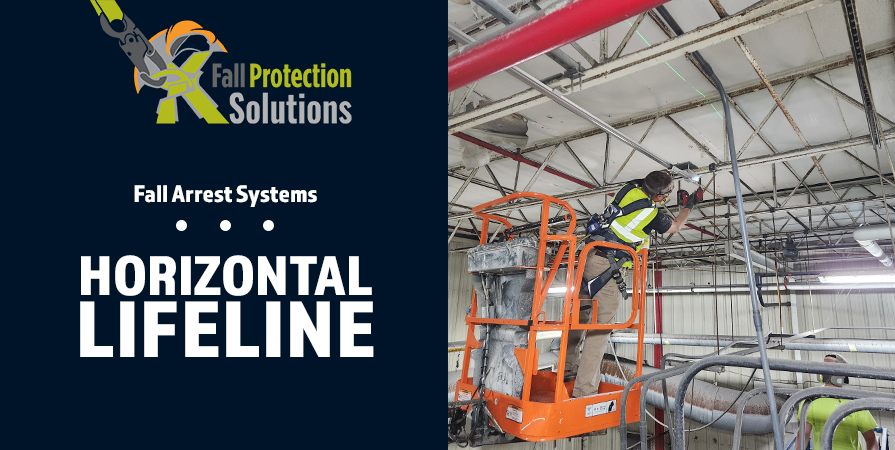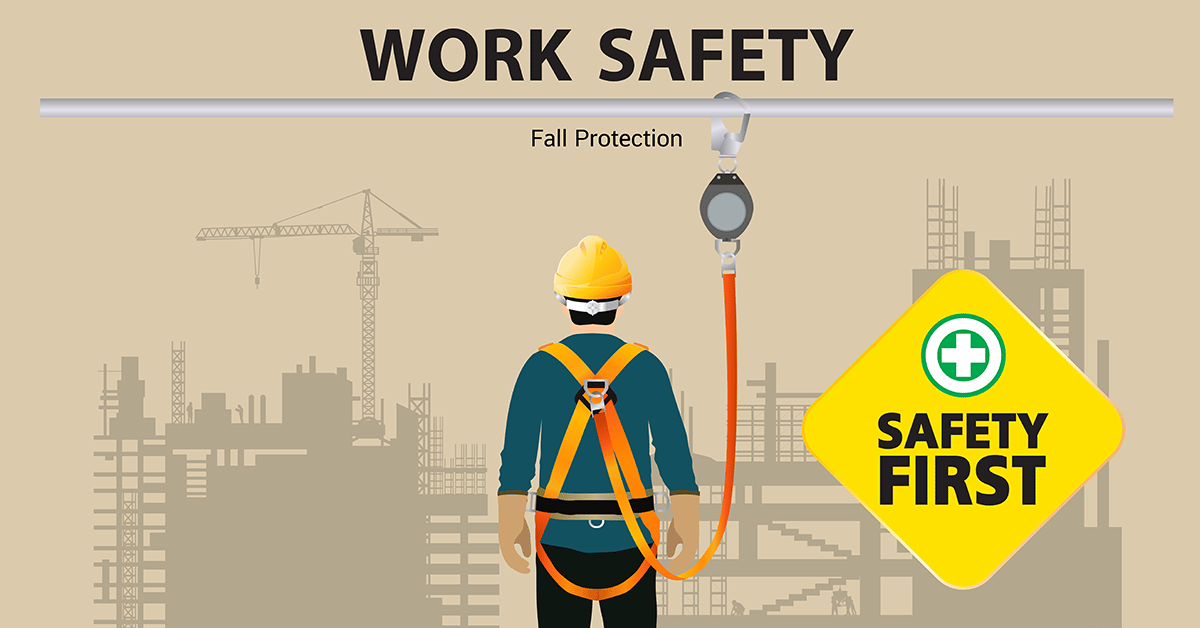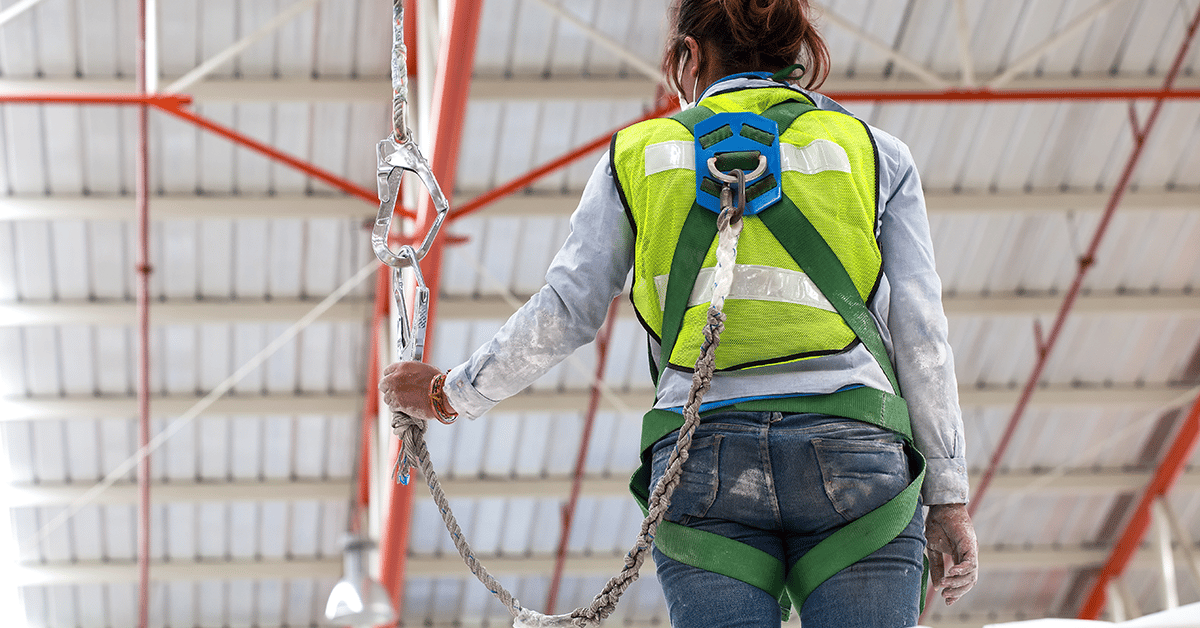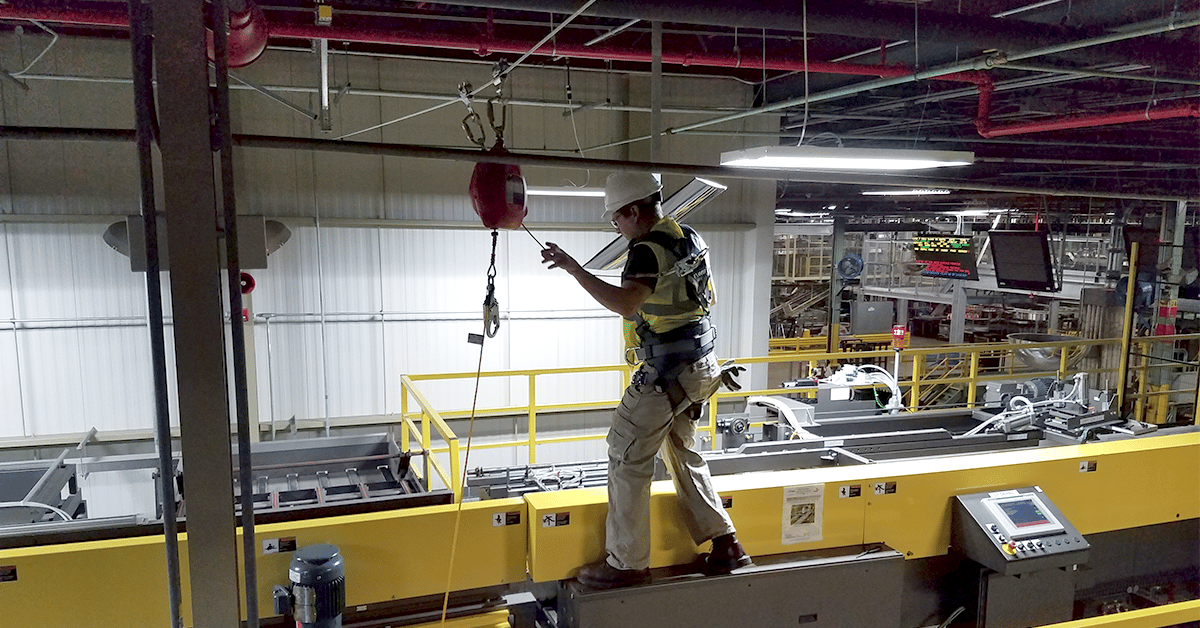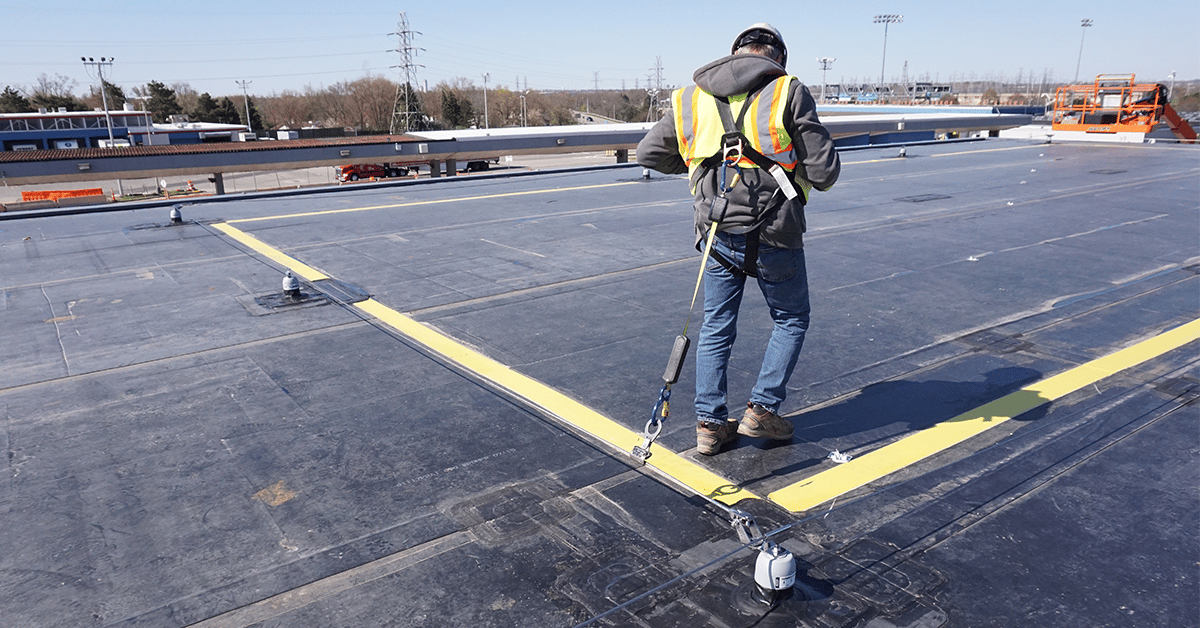A multinational manufacturing company based in Tonawanda, NY recently underwent a corporate safety review, which revealed serious gaps in fall protection at several of their production plants. Eight separate facilities had unique fall protection scenarios that exposed maintenance crews to dangerous fall hazards with either outdated or entirely absent fall protection measures.
Fall Protection Systems (FPS) was brought in to assess each site, develop a custom horizontal lifeline fall protection strategy, and implement fully compliant systems tailored to each location. Our team designed and coordinated installation of complete fall arrest systems that addressed the unique needs of every plant and ensured compliance with OSHA standards.
A Deeper Look at Job Specific Fall Protection Issues
One of the eight facilities housed large, outdoor structures used to protect CO₂ tanks. These tanks, set on rail systems to allow mobility, required regular maintenance that placed workers at elevated risk. The structures provided some environmental shielding but no reliable fall arrest systems, meaning workers were exposed to unprotected edges, slippery surfaces, and unguarded work areas while performing routine tasks. The corporate safety audit flagged this as a major liability.
At another facility, horizontal lifelines had to be installed indoors and retrofitted into the existing overhead roof trusses. The installation was particularly complex due to a dense network of piping, electrical conduit, lighting, and other overhead infrastructure. Navigating around these obstructions with lift equipment required precise planning and coordination to safely access the trusses and complete the installation without disrupting critical systems.
FPS performed site-specific assessments for each plant to determine the most effective and compliant fall protection strategy. Challenges included varying structural layouts, limited overhead access, and the need to avoid disruption to daily operations. Each location posed a unique set of obstacles, requiring customized design and installation strategies. Our goal was to implement horizontal lifeline systems, that integrated seamlessly into existing steel infrastructure, while limiting disruption to work, and keeping safety and compliance as top priorities.
Our Fall Protection Solution: Custom Fall Arrest for 8 Plants
Installing horizontal lifeline systems in these facilities meant working around high-clearance beams and tight overhead access. FPS engineers designed lifeline fall protection systems that could be mounted directly to the existing steel trusses without compromising the structural integrity of the roofs. Using man lifts, our team accessed the elevated steelwork, carefully drilling into the overhead framework to anchor lifeline cables securely and correctly.
Each horizontal lifeline system was built to accommodate the specific geometry and functional requirements of its respective plant. Factors like span distance, anchorage strength, potential swing fall risks, and safe clearance distances were taken into account for every install. In all cases, we used OSHA-compliant equipment rated for multiple users and customized tensioning systems to reduce deflection and ensure optimal performance.
What is a Lifeline in Fall Protection?
A lifeline in fall protection is a flexible line—typically made from wire rope or synthetic fiber—used to secure a worker who is exposed to a fall hazard. The lifeline acts as a critical part of a personal fall arrest system (PFAS), connecting the worker’s harness to a secure anchor point or series of points, allowing movement while safeguarding against falls.
Lifelines are classified as either horizontal or vertical, depending on their orientation. OSHA mandates that all lifelines must have sufficient strength to withstand the forces generated during a fall, and must be used in conjunction with appropriate lanyards, harnesses, and anchors to create a fully compliant system. Lifeline fall protection plays a vital role in industries such as manufacturing, construction, energy, and warehousing.
What is a Horizontal Lifeline?
A horizontal lifeline (HLL) is a type of fall protection system that allows workers to move laterally across a work surface while remaining connected to an anchored lifeline cable. This system is ideal for applications where the work area spans a long distance and requires frequent movement, such as rooftops, catwalks, or elevated tank platforms.
Horizontal lifeline systems must be properly engineered to support potential fall forces. This includes calculating anchor point loads, tension, and maximum arrest distance. OSHA requires that HLL systems either be certified by a qualified person or be pre-engineered and installed according to the manufacturer’s guidelines. Proper training and inspection are also essential to ensure that the horizontal lifeline fall protection system continues to function safely over time.
Has your system been certified by a qualified fall protection inspector? Is your inspection current?
A Horizontal Lifeline Stretches Between?
A horizontal lifeline stretches between two or more anchorage points that are capable of supporting the loads expected in the event of a fall. These anchorage points are typically mounted on steel structures, roof trusses, or other load-bearing components designed to handle dynamic forces.
The distance between these anchor points, the sag of the lifeline cable, and the number of users all influence how the system behaves during use or fall arrest. Systems can be single-span or multi-span depending on the length of the work area and the structure’s configuration. Proper layout and engineering ensure that the lifeline cable maintains enough tension and clearance to prevent bottoming out during a fall.
Are Horizontal Lifelines Safer than Vertical Lifelines?
Whether a horizontal or vertical lifeline system is “safer” depends entirely on the application. Horizontal lifelines are better suited for work areas that require mobility across a wide surface, allowing users to remain connected as they move side-to-side. This reduces the need for disconnecting and reconnecting, which can introduce risk.
Vertical lifelines, on the other hand, are designed for up-and-down access, such as climbing ladders or working on scaffolding. Both systems are safe when properly engineered, installed, and used according to OSHA regulations. The key is selecting the appropriate type of lifeline fall protection based on the work being performed and the environment in which it takes place.
How Many Workers are Allowed on a Horizontal Lifeline?
The number of workers allowed on a horizontal lifeline depends on the system’s design, the strength of the anchorage points, and the tension in the cable. OSHA does not specify a maximum number, but it does require that all systems be designed by a qualified person to accommodate the number of intended users without exceeding the load capacity of the system or structure.
In general, horizontal lifeline systems can be rated for single or multiple users. However, each additional user increases the load and potential deflection, so system components such as shock absorbers, anchors, and cable must be appropriately sized. FPS ensures that all of our lifeline systems are individually engineered to safely support the required number of workers, based on detailed calculations and OSHA guidance.
Horizontal Lifeline Requirements
- Qualified Design: Must be designed by a qualified person or follow a tested and certified manufacturer’s system.
- Anchorage Strength: Anchor points must support at least 5,000 lbs per attached worker or meet OSHA’s criteria for engineered systems.
- Cable Tensioning: Proper tension must be applied to reduce sag and maintain safe fall clearance distances.
- Fall Clearance: Systems must ensure enough vertical clearance to prevent contact with lower levels during a fall.
- Inspection & Maintenance: Regular inspection by a competent person is required to ensure continued compliance and safety.
- User Training: All users must be trained on system use, fall arrest procedures, and emergency rescue protocols.
- Component Compatibility: Lifeline cables, harnesses, lanyards, and connectors must be compatible and meet OSHA (sections 1910 and 1926) and ANSI standards.
Why Choose Fall Protection Solutions?
At Fall Protection Solutions, fall safety isn’t just a service—it’s our specialty. With decades of experience designing and installing OSHA-compliant horizontal lifeline systems, we bring unmatched expertise to every project. Our team works closely with safety managers, facility engineers, and contractors to develop tailored lifeline fall protection solutions that meet both regulatory requirements and the specific demands of each work environment.
What sets us apart is our commitment to safety, precision, and long-term support. From detailed site assessments and custom system design to professional installation and ongoing training, we deliver complete fall protection strategies that reduce risk, protect workers, and safeguard your operation from liability. When safety is non-negotiable, Fall Protection Solutions is the partner you can trust.

Toll-Free: 1 (855) 202-7222
Email: sales@fallprotected.com


